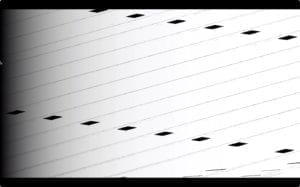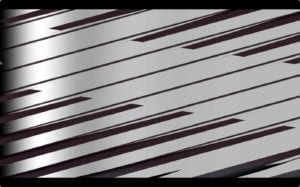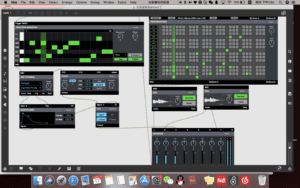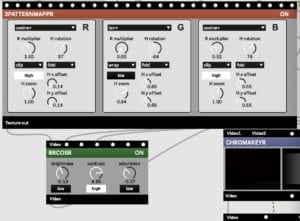Title
Waves
Project Description
I was inspired by the Studie made by Oscar Fischinger, I love how the lines flying on the screen and different geometric shapes moving and changing according to the symphony. But these series of work were limited to black and white, also the symphony was relatively tedious. Therefore, I want to create a piece that combines classical symphony and beats, combines black-white and color, combines the sense of floating and sparkling together.
Demo




Perspective and Context
As we have read, a blind man who can’t see still will associate the color scarlet red with the sound of a trumpet” (Locke, 8-9). I connect more peaceful and quiet symphony with a black and white scene, at the same time, I use different colors to present the beats on the second layer. In this way, I can increase the diversity of the video. Since the symphony gives me a sense of floating and peace, I decided to use black and white flowing lines, the black part starts from the left side, and with the developing of the music, it moves to the right side, and then the window sparkles and turns back to white. This is a soft, flowing frame which reflects the symphonic music. On the other hand, the continuously moving lines and shapes which connect to the beats present dynamic and vivifying frames.
From my perspective, there is no need to present complicated or protean videos, what the most important is the harmony between the visual part and the audio part. Although everyone develops synesthesia according to their own life experience, which diverse from person to person, they still share some similar feelings. And I’m trying to figure out what these similarities are, using them in the project. In this way, the project can arouse the audience’s sympathy.
Development & Technical Implementation
I downloaded a period of Symphony Sounds made by Lemoncreme from freesound.org. I loaded the music into the SAMPLR, and I added groove beats using the Piano roll sequencer. And I use a 3PATTERNMAPPR to generate colorful and continuously changing lines and shapes as the second layer.
As for the technical part, I originally used CELL-MIDI to play the symphony track, but then I found that the playing time was limited, so I changed to use SAMPLR. In this way, I can play the whole music piece, and adjust the speed easily. And when working on the piano roll sequencer, I met the issue that the signals change so fast that it is hard for eyes to catch up with. To slow down, I added two SMOOTHRs before inputting the signals into 3PATTERNMAPPR. Also, if directly using the original RGB parameters, it is too dazzling for us to see, so I add a BRCOSR to change the brightness, contrast, and saturation of the shapes.
This is the snapshot of my project:
https://gist.github.com/tz1201/9ffc40f89bbfb5825b7999962f86babc

the objects i used to create beats

the smoothr to slow down the speed of the video

i use samplr to present music piece, and one interesting is the lasting end, when i set the higher limitation to 60 seconds, i can not play the whole piece. but when i set it to 20 seconds, i can play the whole 17s track.

i use brcosr to adjust the color of the short video.
Presentation
When I did the presentation, the first problem is that I did not set the parameter of the time limitation of the SAMPLR. Moreover, even though I used a stereo mixer in the project, I still did not combine two tracks of music correctly. To solve the problem, Eric helped me to do the live improvement, connecting both the left and right track into MIXER. Thus, two sounds are not separately playing.
Conclusion
One of the biggest issues of my project is that it lacks diversity, my video only consists of arranged lines, and the changes are limited to the color changing and translational motion. Another thing is that the connection between these movements and the music is not very strong, it is kind of hard for the audience to enjoy them as a whole. I also learned a lot from my classmates, like I can consider the keyboard as an input to create more interactive and diverse effects of the project. But I still very like the black and white variation I used, and I want to apply it to my future project and make it more meaningful.
Resource
Emrich, Hinderk M., Janina Neufeld, and Christopher Sinke. “Synesthesia, a Neurological Phenomenon.” In See This Sound: Audiovisuology a Reader, 414–23. Köln: Verlag der Buchhandlung Walthar Köning, 2015.